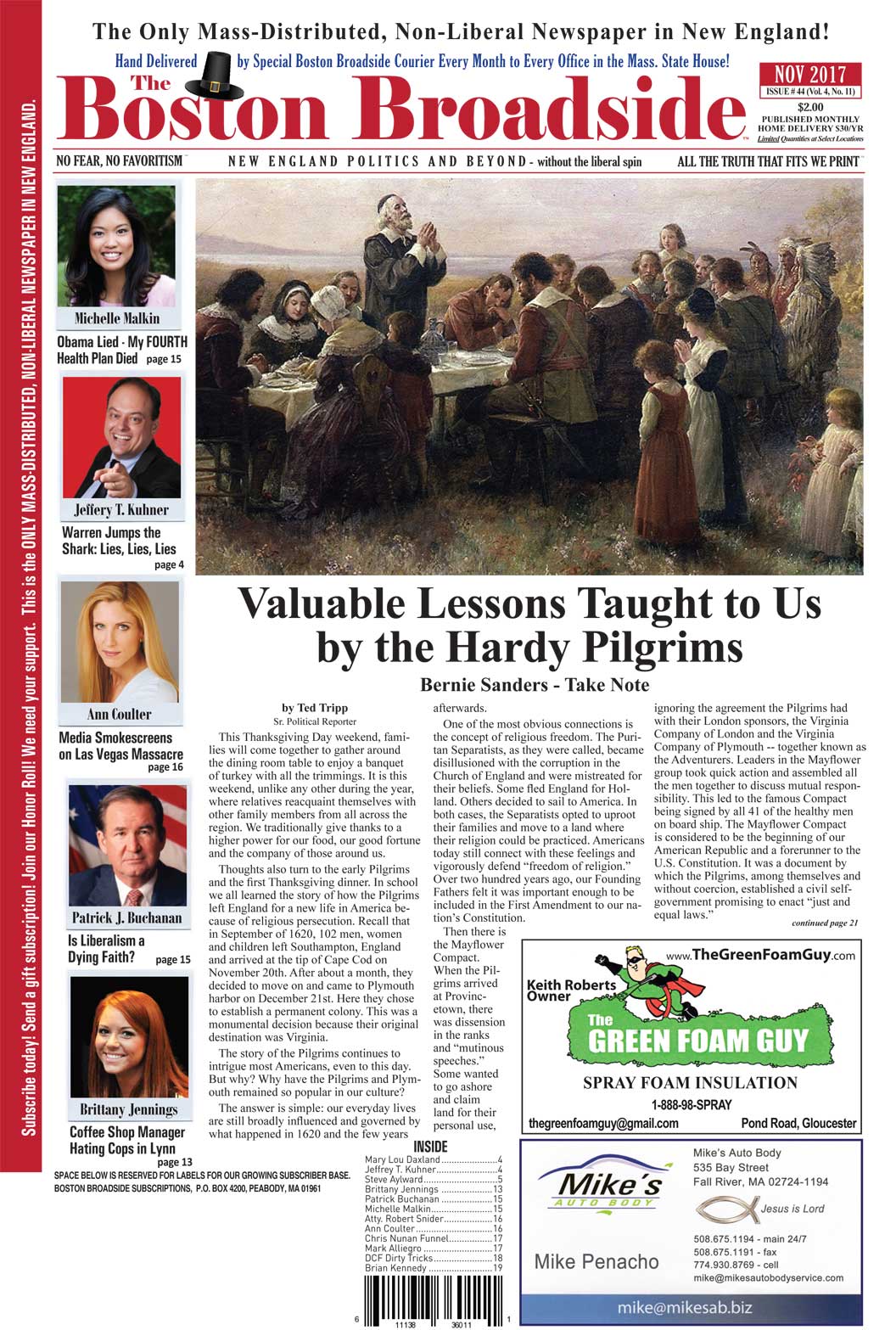Jeff Kuhner – Boston Bulldozer – Talk Radio 680AM WRKO & his bride Dr. Grace have played various sound clips of family life with son Ashton and daughter Ava.
As a special treat for the 4th of July, they replayed Ava singing God Bless America from late last summer at Jeff’s 50th Birthday Party celebration. She was tremendous – she just stoop up on a chair, and sung to everyone. Precious. It was amazing to witness.
_____________________________________________________________________________
‘I Pledge Allegiance to the Flag of the United States of America …’: Who Wrote It and Why?
FROM OUR PRINTED JULY 1, 2020 EDITION of THE BOSTON BROADSIDE
www.BostonBroadside.com
by Ted Tripp
Sr. Political Reporter
Most of us learned in grammar school that Katharine Lee Bates wrote the song “America the Beautiful.” And we know that Irving Berlin wrote “God Bless America” just prior to World War II and dedicated all of his royalties to support the Boy and Girl Scouts of America. As we got older, our history classes taught us that Francis Scott Key wrote the “Star-Spangled Banner” as he was being held on a British ship during the shelling of Ft. McHenry in the War of 1812.
We learned all these songs when we were very young and sang them in elementary school, sang them at sporting events and at patriotic ceremonies or celebrations. Another important part of growing up was learning The Pledge of Allegiance. These 31 words were designed to instill in our young minds a sense of love, respect and dedication to our country. It does this extraordinarily well.
But how many of us know who wrote the Pledge and how it came to be? When was it written? How has it changed over the years? The history has some surprising elements.
The Pledge was written by a 37-year-old Baptist minister and avowed socialist, Francis Bellamy. He was a preacher at the Dearborn Street Church in Boston around the time he wrote the original pledge in 1892 for The Youth’s Companion, a Boston-based weekly magazine with a circulation of almost 500,000 at the time – the largest in the United States.
The story starts in the latter half of the 1880s when the nation was gearing up for the 400th anniversary of Columbus Day on October 12, 1892. This was to be a major national event and celebration, leading up to the 1893 Chicago World’s Fair. President Benjamin Harrison and Congress were lobbied to make Columbus Day that year a national observance, if not a holiday. In February of 1892, U.S. Commissioner of Education William Harris announced his support of the National Public School Celebration of Columbus Day and a program of exercises to be prepared by The Youth’s Companion.
Besides being a minister, Bellamy was also a writer and was affiliated with The Youth’s Companion. His nephew, James Upham, and another businessman owned the magazine and Bellamy wrote articles for it as well as did some editing. This, along with a promotional effort, threw Bellamy into the position of writing the Pledge.
In the late 1880s, The Youth’s Companion Premium Department started selling American flags to public schools. Business had slowed by 1891 and, as the story goes, the magazine decided to use the 1892 Columbus Day event to promote the sale of additional flags. That summer Bellamy was asked to write a patriotic gesture to the flag to increase sales. At this time, Bellamy was also chairman of a national committee of educators and civic leaders who were planning the Columbus Day activities.
On September 8, 1892, The Youth’s Companion published Bellamy’s original 22 word pledge which was supposed to be recited by all school children on Columbus Day the following month. Twelve million children were said to have taken the pledge that day. Bellamy heard the pledge for the first time on October 21st when 4000 high school boys in Boston recited it.
Bellamy’s original version said, “I pledge allegiance to my flag and the Republic for which it stands…” He later inserted the word “to” between “and” and “the” for better cadence. In the 1920s, the National Flag Conference, presided over by the American Legion and the Daughters of the American Revolution, changed “my flag” to “the flag of the United States of America.”
In 1942, on the 50th anniversary of the Pledge, Congress adopted it as part of the U.S. Flag Code and in 1945 it was officially designated The Pledge of Allegiance.
The Pledge was last modified on Flag Day in 1954 when Congress added the words “under God.” This was prompted through a national campaign by the Knights of Columbus to acknowledge some semblance of religious heritage in our country’s historic past. Many others saw it as a cold war response to the “godless communism” of the Soviet Union.
Although Bellamy is best known for the Pledge, his socialist activism continually got him in trouble. His preaching of sermons such as “Jesus the Socialist” got him tossed out of the Bethany Baptist church in Boston. He was also vice president of a socialist auxiliary group of the Nationalist movement, which advocated the nationalization of the American economy. He also believed that all schools should be government run, with no provision for the religious or private schools that were prevalent at the time.
Bellamy had a famous American socialist cousin, Edward Bellamy, who published collectivist utopian novels. His most well known was “Looking Backward,” which in 1888 sold more copies in the U.S. than any other novel since Uncle Tom’s Cabin. American socialism was widely seen as the solution to equalizing the disparity between the rich and the poor.
One of the more unusual issues surrounding Bellamy was his recommendation in the 1892 issue of The Youth’s Companion for a physical salute to the flag while the Pledge was being recited. That salute consisted of an outstretched right arm, palm open and down with fingers together, arching upwards towards the flag. There are a number of old photographs showing large groups of school children using this salute as they are supposedly reciting the pledge. Later, as we now know, a similar version of this salute was adopted by the National Socialist German Workers Party, the Nazis, in the 1930s. Because of this, President Roosevelt and Congress in 1942 officially discarded the Bellamy salute and established the tradition of holding one’s right hand over the heart.
Let’s wrap up this story on a high note. Everyone should at one time or another hear a rendition of the Pledge by that famous comedian, talented clown and vaudeville/TV star, Red Skelton. On January 14, 1969, Red recited the Pledge on his TV program with an explanation of what each phrase means in a very personal manner. When he was through, he asked all the boys and girls in the TV audience to repeat the Pledge with him as he closed out the show. It was an astonishing event, like nothing you would see on television today. You can see Red’s rendition of the Pledge:
Finally, you might be interested in knowing that of all the countries in the world, only the U.S. and the Philippines have a pledge to their flag. ♦


